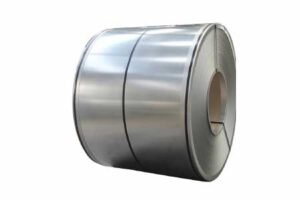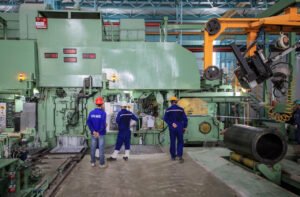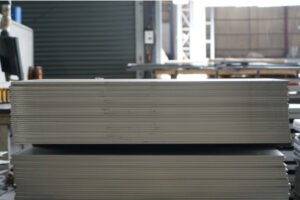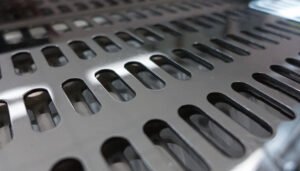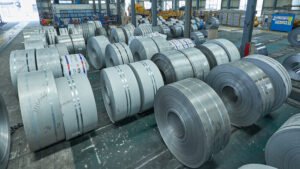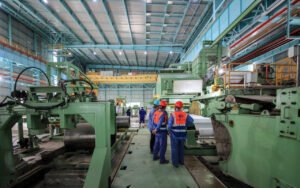Recycling Stainless Steel Sheet Scrap: Circular Economy Opportunities

Are you grappling with the rising costs of raw materials and the increasing pressure to operate more sustainably? Many businesses treat their stainless steel sheet scrap as a mere byproduct, missing out on a significant opportunity to boost their bottom line and enhance their environmental credentials through a circular economy model1.
Stainless steel sheet scrap recycling is a cornerstone of the circular economy, involving the collection, meticulous sorting, and re-melting of scrap to forge new steel products. This process significantly conserves natural resources, slashes energy consumption, and minimizes landfill waste, creating a sustainable, closed-loop system for this valuable alloy.
This isn't just about waste management; it's about value creation. By viewing scrap not as waste but as a resource, you can unlock new revenue streams, improve supply chain resilience, and build a brand that resonates with today's eco-conscious market. In this article, I'll share my experiences from the front lines of the global steel trade to guide you through the practical steps and strategic benefits of embracing this powerful model.
The transition from a traditional linear "take-make-dispose" economy to a circular one represents a fundamental shift in industrial strategy. For too long, we've extracted raw materials, manufactured products, and then discarded them. In a world of finite resources and volatile supply chains, this model is no longer tenable. As a diversified group at MFY, we have seen firsthand how integrating circular principles—like turning scrap back into high-quality stainless steel coils and sheets2—provides a crucial competitive edge. This approach isn't just an environmental ideal; it's a pragmatic business strategy that fosters resilience, efficiency, and long-term profitability for our partners worldwide.
Background of stainless steel sheet recycling in the circular economy
Are you aware that the scrap in your facility is part of a century-old story of resourcefulness? Many businesses overlook the deep-rooted history of metal recycling, failing to grasp its strategic importance in today's resource-constrained world. Understanding this evolution provides a clear roadmap for future sustainability and profitability.
Stainless steel has always been highly recyclable thanks to the intrinsic value of its alloying elements like chromium and nickel. Historically a simple cost-saving measure, its role in the circular economy has evolved into a critical pillar of sustainable industrial policy, supply chain security, and corporate responsibility globally.
The journey of stainless steel recycling is a fascinating reflection of our industrial progress. What began as a purely economic decision—it was simply cheaper to remelt scrap than to mine virgin ore—has blossomed into a multi-faceted strategic imperative. Early on, the drivers were clear-cut: save money, conserve resources during wartime, and manage industrial waste. Today, the landscape is far more complex and rewarding. I recall a client in Southeast Asia, an equipment manufacturer, who initially viewed their offcuts and end-of-life returns as a costly disposal problem. We worked with them to reframe this perspective. By implementing a simple sorting and collection system, they transformed this "waste" into a consistent revenue stream. More importantly, they began marketing their products based on their recycled content, winning contracts with major European clients who are mandated to meet stringent sustainability targets. This shift from a cost center to a profit and marketing center illustrates the modern power of a circular approach, driven by a confluence of environmental regulations, consumer demand, and the strategic pursuit of a stable, predictable supply chain. This evolution from simple remelting to a sophisticated, value-driven ecosystem sets the stage for the advanced practices we see today.
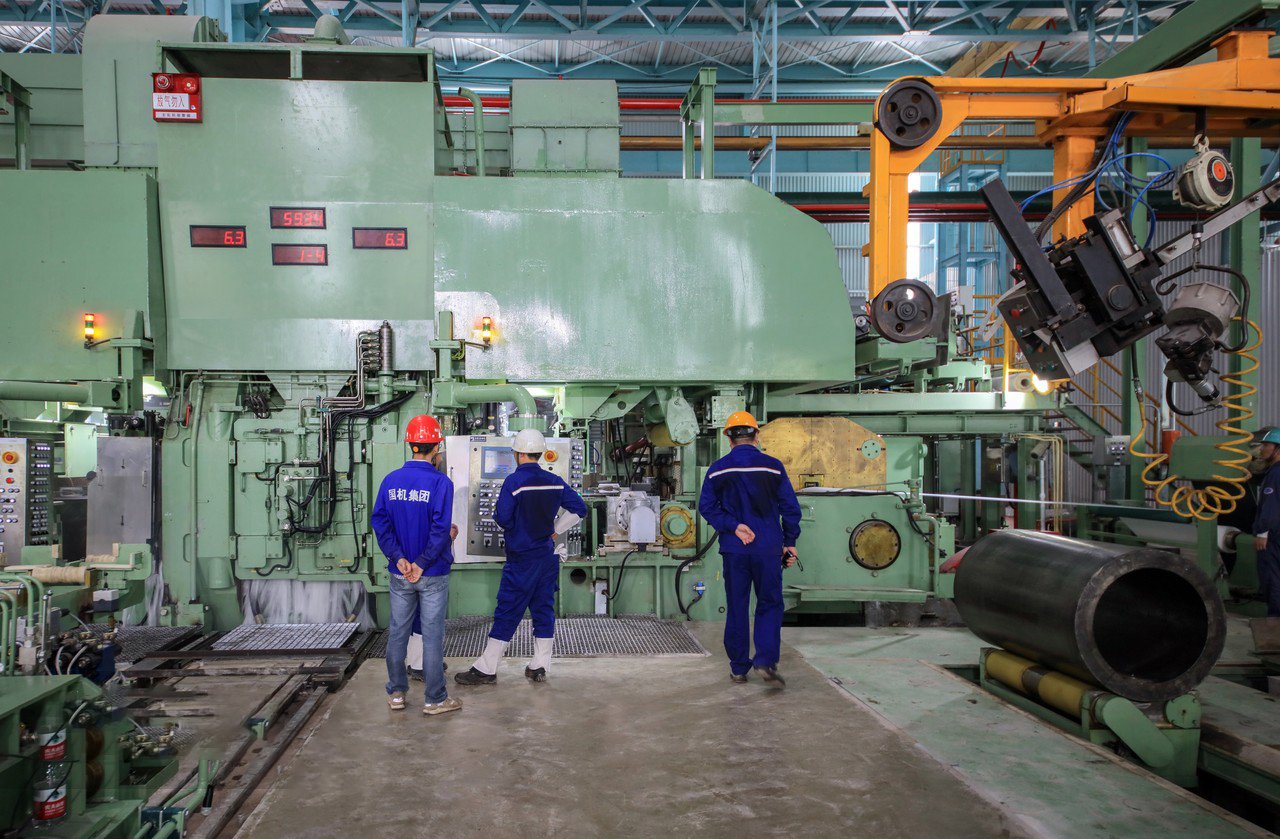
The practice of recycling is not a modern invention but a long-standing tradition of pragmatism and efficiency in the metals industry. However, the context and scale have changed dramatically over the decades, elevating stainless steel to a position of prominence within the modern circular economy framework. Understanding this historical progression is crucial for any business looking to optimize its material lifecycle today.
The Genesis of Scrap Metal Recycling
The story of metal recycling is as old as metal production itself. From ancient civilizations remelting bronze tools to the industrial revolution's insatiable demand for iron, reusing metal has always made economic sense. The two World Wars, however, acted as massive catalysts, transforming scrap collection from a scattered, informal activity into a vital, organized national effort. Propaganda posters famously urged citizens to donate their "pots and pans for planes and tanks," embedding the concept of scrap recycling into the public consciousness as an act of patriotic and economic necessity.
Following the wars, the global economic boom further industrialized the scrap sector. It became clear that recycling steel required significantly less energy than producing it from virgin iron ore. This simple economic and energetic equation laid the foundation for the sprawling global scrap industry we know today. According to historical data from geological surveys and industry bodies, steel has consistently maintained one of the highest recycling rates of any material, often exceeding 85% for major sectors like construction and automotive. This long history demonstrates that recycling isn't a trend; it's a fundamental component of efficient industrial manufacturing.
At MFY, we are inheritors of this long tradition. Our role in the global supply chain is not just about producing and selling new steel; it's about ensuring the seamless flow of materials throughout their entire lifecycle. We see ourselves as facilitators of this continuous loop, connecting the 'new scrap' generated by a manufacturer in India with the furnace that will give it a new life, perhaps as a stainless steel pipe3 used in a construction project in the Middle East.
Stainless Steel's Unique Position in the Recycling Hierarchy
While all steel is recyclable, stainless steel holds a special place in the hierarchy. Its value is not just in the iron but, more critically, in its alloying elements—primarily chromium and nickel. These metals are expensive and resource-intensive to mine and refine. Consequently, every kilogram of stainless steel scrap that is recovered and recycled represents a significant preservation of both capital and natural resources. This intrinsic value is the single greatest driver behind its incredibly high, and economically viable, recycling rate.
The industry distinguishes between 'new scrap' (or 'prompt scrap'), which is the clean, well-defined offcuts from manufacturing processes, and 'old scrap' (or 'post-consumer scrap'), which comes from end-of-life products like decommissioned buildings, old vehicles, or discarded appliances. As a partner to numerous manufacturing companies, we at MFY often help our clients develop systems to manage their 'new scrap' with maximum efficiency. A client of ours, a producer of high-end kitchen sinks, refined their production process to segregate their Grade 304 and 316 offcuts immediately. This simple act of source separation prevented downcycling and increased the resale value of their scrap by over 15%, turning a logistical task into a direct contribution to their profitability.
| Metric | Primary Production (from Ore) | Secondary Production (from Scrap) | Savings |
|---|---|---|---|
| Energy Consumption | ~50 GJ per tonne | ~14 GJ per tonne | ~72% |
| CO2 Emissions | ~6.1 tonnes per tonne | ~1.5 tonnes per tonne | ~75% |
| Water Usage | ~40,000 Litres per tonne | ~18,000 Litres per tonne | ~55% |
| Virgin Material Use | 100% | 0-30% | ~70-100% |
The Circular Economy Framework: A Modern Paradigm Shift
The contemporary concept of the "circular economy" has elevated recycling from a simple operational tactic to a core strategic principle. It challenges the traditional linear model of 'take-make-dispose' and replaces it with a closed-loop system designed to eliminate waste and keep materials in use for as long as possible. In this framework, products are intentionally designed for disassembly and recycling, and business models are built around reuse, repair, and remanufacturing.
Stainless steel is the quintessential circular material. Its durability ensures a long service life, and its high intrinsic value guarantees that it will be collected and recycled at the end of that life. It can be recycled repeatedly without any loss of quality or performance, making it a permanent resource in our material inventory. This is not just theoretical; it is a daily reality in our business. The stainless steel sheet we export to a client in Russia for a construction project may contain atoms from a German car manufactured 20 years ago and a Japanese skyscraper demolished 10 years prior.
This global, interconnected flow of materials is what excites me about our industry's future. Our vision at MFY is to be a leader in facilitating this global circular trade. By leveraging technology—including the software we develop to enhance supply chain transparency—we help our clients not only purchase high-quality stainless steel products but also participate effectively in a system that is more sustainable, resilient, and ultimately, more profitable for everyone involved.
Stainless steel is infinitely recyclableTrue
Stainless steel can be recycled repeatedly without losing quality or performance, making it a perfect circular economy material.
All steel scrap has equal valueFalse
Stainless steel scrap is more valuable than carbon steel scrap due to its alloying elements like chromium and nickel.
Current practices and technologies in stainless steel sheet recycling
Are your scrap handling methods stuck in the past? Many businesses fail to realize that outdated practices lead to contaminated materials, reduced scrap value, and hidden operational inefficiencies. Adopting modern recycling technologies and processes is the key to maximizing your financial return and streamlining your entire operation.
Current best practices in stainless steel recycling involve disciplined collection and source separation, followed by advanced sorting using technologies like handheld X-ray fluorescence (XRF) analyzers for precise alloy identification. The material is then processed and melted in high-efficiency Electric Arc Furnaces (EAFs) to produce new steel.
Moving from theory to practice is where the real value is unlocked, and it's more accessible than you might think. Technology that was once reserved for large-scale, specialized recycling yards is now within reach of manufacturers and contractors. I recently worked with a mid-sized engineering firm in the Middle East that was fabricating components for a large desalination plant. They were generating significant amounts of high-grade 316L and Duplex stainless steel scrap, but it was all being mixed together. They were selling this pile of mixed metals at a low, undifferentiated price. On my recommendation, they invested in a single handheld XRF analyzer. The transformation was immediate. Their yard manager could now instantly and accurately segregate the scrap by grade. This simple change allowed them to sell their scrap as certified, grade-specific material, commanding a much higher price and establishing a reputation for quality that even extended to their scrap sales. This story perfectly illustrates a core principle: the most critical and value-creating step in the entire recycling chain is sorting the material correctly at the source. From there, the technological journey to new steel is incredibly efficient.
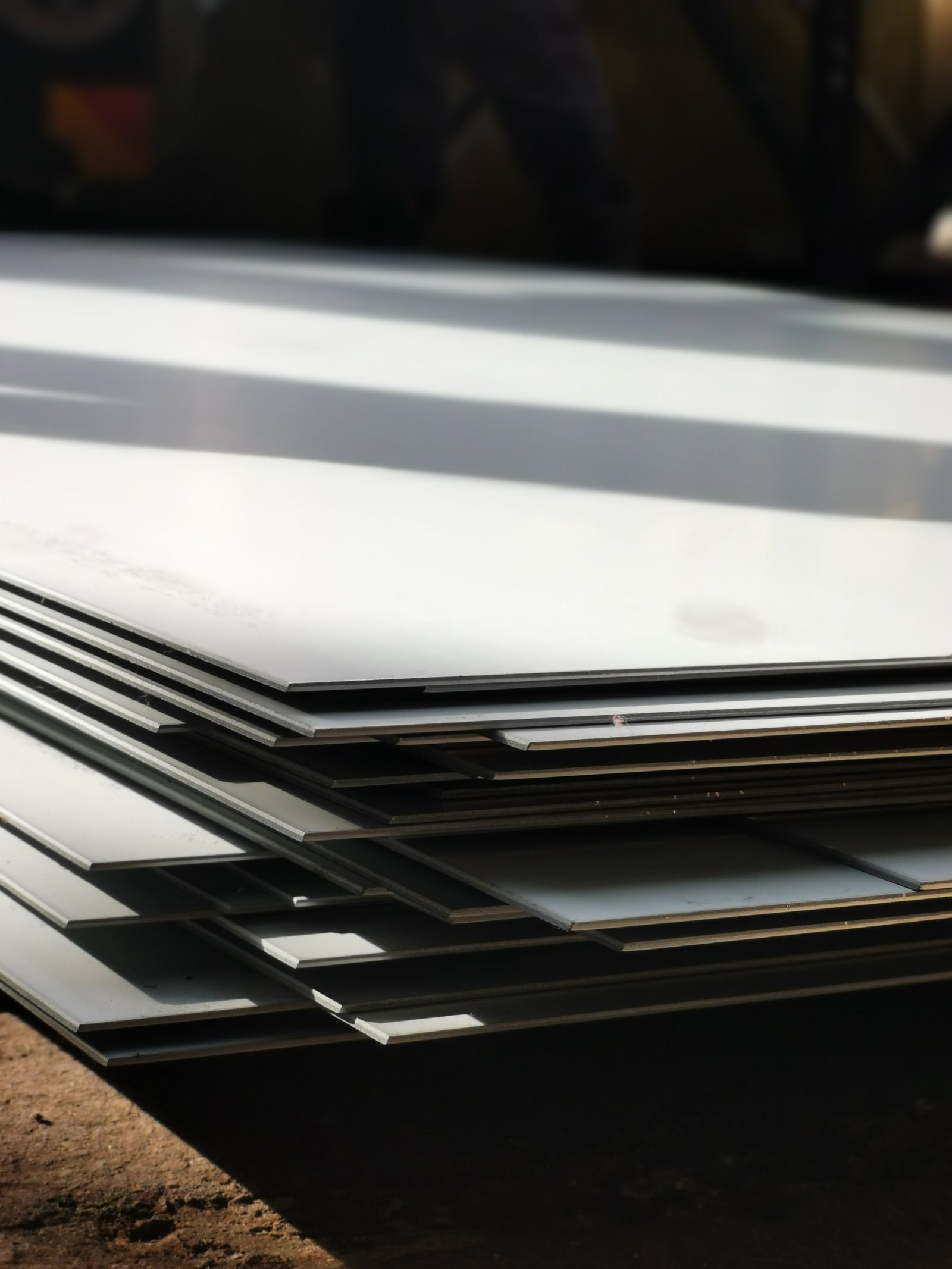
The journey of a piece of stainless steel scrap back into a high-quality finished product is a sophisticated process, blending disciplined logistics with advanced technology. It's a far cry from the old image of a junkyard. Today's recycling stream is a crucial artery of the industrial ecosystem, and understanding its key stages—from sorting to melting—is essential for any stakeholder in the metals industry.
Source Separation and Advanced Sorting Technologies
The single most important principle in maximizing the value of scrap is: "keep it clean and keep it separate." Contamination is the enemy of efficient recycling. When different grades of stainless steel, or worse, other metals like zinc, lead, or copper, are mixed, it can degrade the quality of the final melt. This "contaminated" scrap must either undergo costly re-sorting or be downcycled into lower-value products, destroying both economic and material value. The most effective way to combat this is through disciplined source separation, right at the point where the scrap is generated.
To aid this process, technology has become an indispensable partner. The handheld X-ray fluorescence (XRF) "gun"4 is a revolutionary tool that has democratized alloy analysis. In seconds, an operator can point the device at a piece of metal and get a precise breakdown of its elemental composition, allowing for foolproof identification of grades like 304, 316, 310, or 2205. For larger scale operations, advanced sensor-based sorting systems deployed in modern scrap yards use a combination of X-rays, laser-induced breakdown spectroscopy (LIBS), and high-speed cameras to automatically separate vast quantities of shredded scrap with incredible accuracy and speed.
I saw the power of simple source separation firsthand with a construction contractor we work with in Russia. On a massive project site, they were generating various types of metal scrap. Initially, it all went into one large skip. We helped them implement a simple, low-tech solution: a multi-bin system with clear color-coding and signage for different materials (e.g., blue for stainless steel, green for carbon steel, red for copper). Combined with a brief training session for their on-site staff, this procedural change reduced contamination to near-zero and increased their scrap revenue by over 20%. It was a powerful lesson in how basic process discipline can yield significant financial results.
The Role of the Electric Arc Furnace (EAF) in Modern Steelmaking
Once sorted and processed (typically by shearing or baling for density), the stainless steel scrap is sent to a steel mill, where it becomes the primary feedstock for an Electric Arc Furnace (EAF). The EAF is the heart of modern circular steel production. Unlike the traditional Basic Oxygen Furnace (BOF), which primarily uses virgin iron ore and can only accommodate a small percentage of scrap, the EAF can use a charge of up to 100% recycled scrap. This makes it the technology of choice for producing stainless and specialty steels in an environmentally friendly way.
The process is a marvel of power and precision. Massive graphite electrodes are lowered into the furnace, and an immense electric current is passed through them, creating an arc that generates intense heat, melting the scrap at temperatures around 1,650°C (3,000°F). Alloying elements are then added with great precision to bring the molten bath to the exact chemical specifications required for the desired grade of stainless steel before it is cast into new slabs, billets, or coils. Globally, it's estimated that the vast majority—over 70%—of new stainless steel is produced via the EAF route, a testament to the industry's reliance on scrap. The energy savings are monumental, with the EAF process consuming only about 25-30% of the energy required for primary production.
| Process Step | Basic Oxygen Furnace (BOF) | Electric Arc Furnace (EAF) | Key Difference |
|---|---|---|---|
| Primary Feedstock | Molten iron from blast furnace (virgin) | Recycled steel scrap | Reliance on Virgin vs. Recycled Material |
| Scrap Usage | ~20-30% | Up to 100% | Recycling Capability |
| Primary Energy Source | Exothermic chemical reactions | High-voltage electricity | Carbon Footprint Driver |
| Typical Product | High-volume carbon steels | Carbon, alloy, and stainless steels | Flexibility and Specialization |
Digitalization and Traceability in the Scrap Supply Chain
The final frontier in modernizing the recycling process is digitalization. For decades, the scrap industry operated on handshakes and paper trails, making traceability a significant challenge. Where did this batch of scrap come from? What is its certified composition? How can we prove the recycled content of our final product? These are questions our clients are increasingly asking, driven by regulations and their own customers' demands for transparency.
This is where MFY's commitment to innovation comes into play. We are actively developing and deploying digital solutions to address this. Imagine a "material passport" for every batch of scrap, created at the point of generation using a simple mobile app. This digital record, linked to a QR code or RFID tag, can travel with the material, capturing data on its origin, grade (verified by XRF), and weight. This information is then accessible throughout the supply chain, from the collection truck to the furnace operator.
The benefits of such a system are transformative. It provides an unbroken chain of custody, building trust and ensuring quality control. It allows for accurate reporting on recycled content, a critical metric for green building certifications like LEED or for automotive manufacturers tracking their carbon footprint. For us at MFY, this transparency is not just a feature; it's fundamental to our vision. By creating a fully traceable, digitally-enabled circular supply chain, we can provide our global partners with an unparalleled level of assurance and help them meet the demands of the 21st-century marketplace.
XRF analyzers identify alloy gradesTrue
Handheld XRF devices provide instant elemental analysis to accurately sort stainless steel scrap by grade (304, 316 etc.).
EAFs can't use 100% scrapFalse
Electric Arc Furnaces can melt 100% recycled scrap, unlike Basic Oxygen Furnaces which require virgin iron ore.
Key challenges facing stainless steel sheet scrap recycling
While the benefits of recycling are clear, pretending the path is without obstacles would be a disservice. Ignoring the inherent challenges of scrap collection and processing can lead to costly compliance failures, unexpected financial losses, and even environmental harm. Proactively understanding and mitigating these risks is what separates successful circular programs from failed ones.
The primary challenges in stainless steel scrap recycling include pervasive alloy contamination which degrades material quality, inefficient and fragmented collection logistics, especially for post-consumer scrap, and the inherent volatility of global scrap market prices, which can deter crucial long-term investment in recycling infrastructure.
I’ll never forget a situation early in my career that drove this point home. We had sourced a large quantity of what was certified as Grade 316 scrap for a client’s specific production run. However, upon arrival at the mill, testing revealed significant contamination with Grade 304 and other lower-value materials. The entire shipment was rejected. The logistical nightmare of returning the material, combined with the urgent need to source a replacement, caused significant delays and financial strain. It was a harsh but valuable lesson. This experience solidified our commitment at MFY to rigorous, multi-point verification and underscored why we invest so heavily in technology and partnerships. It’s because we understand that in the scrap business, you must plan for challenges and have robust systems in place to manage them effectively. Trust is hard-won and easily lost, and quality control is everything.
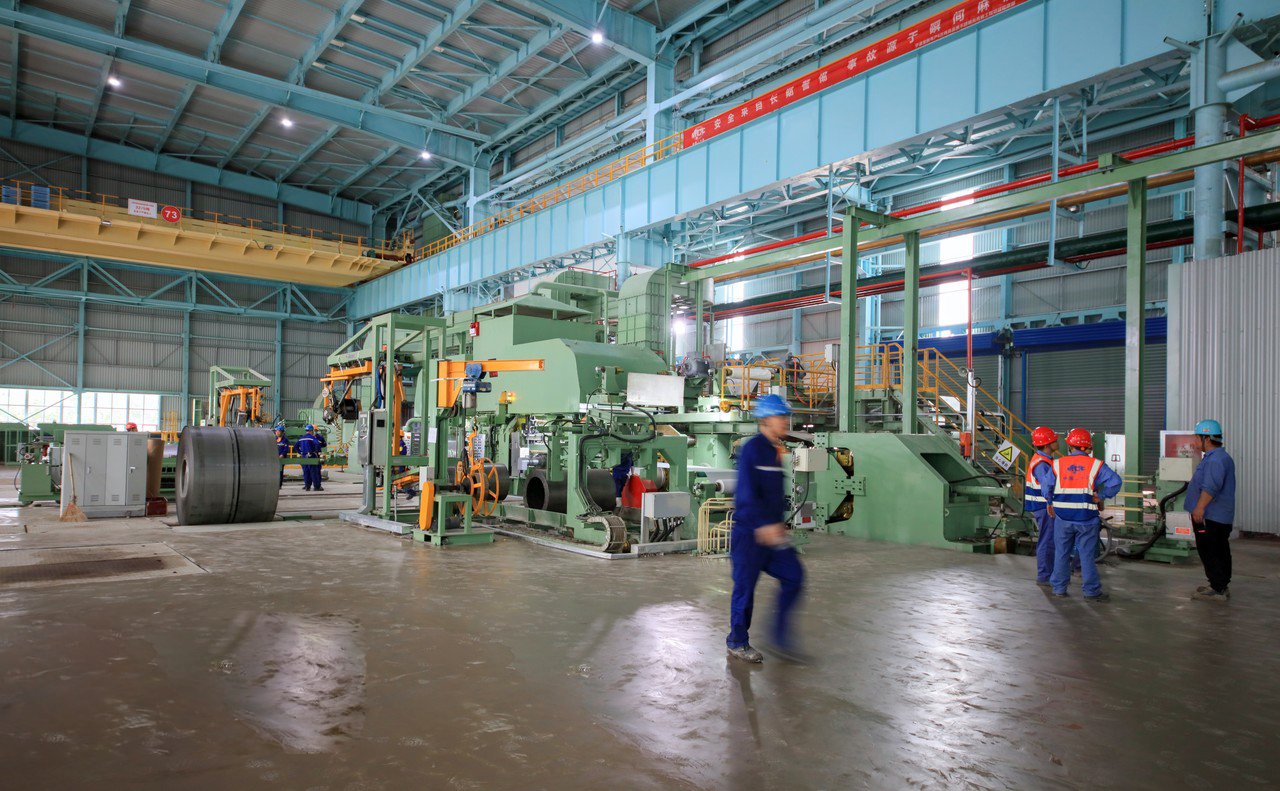
Navigating the world of stainless steel recycling requires a clear-eyed understanding of the practical and economic hurdles that can arise. While the goal of a perfect circular system is laudable, the reality on the ground is complex. From microscopic metallurgical issues to global macroeconomic forces, these challenges must be managed with expertise and strategic foresight.
The Persistent Problem of Contamination and Alloy Segregation
The most persistent technical challenge in stainless steel recycling is managing contamination. While we've discussed the importance of sorting, the reality is that it's often imperfect. The presence of undesirable elements, even in small quantities, can have significant consequences. For example, excess copper or tin can reduce the ductility and hot workability of the new steel, leading to cracking during production. Zinc, often found as a coating on other steel parts, can vaporize in the EAF, leading to furnace dust that requires special handling as hazardous waste.
Beyond external contaminants, the segregation of different stainless steel families is a major hurdle. To the naked eye, a sheet of Grade 304 (the most common austenitic grade) and Grade 430 (a common ferritic grade) look identical. Yet, their compositions, properties, and values are vastly different. 304 contains expensive nickel, while 430 does not. Accidentally mixing a batch of 430 scrap into a melt intended to be 304 would dilute the nickel content, potentially rendering the entire heat off-specification and forcing it to be downcycled or scrapped entirely—a costly error.
Industry data consistently highlights the economic impact of this issue. A study by a leading metallurgical institute5 found that the "down-pricing" of mixed stainless steel scrap compared to cleanly segregated grades can be as high as 20-30%. This represents a direct financial loss for the scrap generator and an inefficiency in the system, as valuable alloys like nickel are not utilized to their full potential. This is why investment in sorting technology and process discipline at the source isn't just a best practice; it's a direct driver of profitability.
Logistical Hurdles and Informal Economies
The logistics of collecting scrap, especially 'old' or 'post-consumer' scrap, are fraught with challenges. Unlike 'new' scrap, which is generated in a controlled factory environment, old scrap comes from millions of disparate sources: demolished buildings, junked cars, discarded appliances, and old industrial equipment. Creating an efficient and cost-effective network to aggregate this material from such a wide and unpredictable geographic spread is a monumental task. This is often referred to as the 'last mile' problem of recycling.
In many of our key export markets, including India and Southeast Asia, this logistical gap is filled by a vast and complex informal economy. Countless individuals and small-scale operators make their living by collecting, manually sorting, and trading scrap metal. This sector is absolutely crucial to achieving high recycling rates and provides livelihoods for many. However, it also presents challenges for industrial-scale recycling. Sorting is often done by hand and sight, leading to inconsistencies. Traceability is virtually non-existent, and integrating these informal flows into a documented, quality-controlled formal supply chain is incredibly difficult.
We encountered this exact issue when working with a client on a large infrastructure project in Southeast Asia. They were contractually obligated to recycle their construction waste but struggled to consolidate and certify the scrap coming from dozens of small subcontractors, many of whom sold their scrap daily to local informal collectors. Our solution was to work with the main contractor to set up a centralized collection yard on-site. We provided basic sorting equipment and a transparent pricing structure, offering a slightly better rate than the informal market. This incentivized subcontractors to bring their scrap to the official yard, allowing for proper documentation and quality control, turning a chaotic and untraceable system into an organized and profitable one.
| Logistical Challenge | Primary Cause | Potential Solution | MFY's Role |
|---|---|---|---|
| Fragmented Collection | Scrap generated at numerous, small, diverse locations. | Centralized collection points; incentivization programs. | Partner with clients to design on-site management programs. |
| Inconsistent Sorting | Lack of technology and training in the informal sector. | Provide training; deploy accessible tech (e.g., mobile apps, handheld XRF). | Offer training and technological support to key suppliers. |
| Lack of Traceability | Paper-based or non-existent documentation. | Implement digital tracking systems (QR codes, RFID). | Develop and deploy supply chain software for material passports. |
| Transportation Costs | Low-density scrap is expensive to ship. | On-site baling/shearing to increase density before transport. | Advise clients on efficient processing and logistics. |
Market Volatility and Economic Viability
ly, the entire recycling ecosystem operates under the shadow of market volatility. The price of stainless steel scrap is not fixed; it fluctuates daily based on a host of global factors. The primary driver is the London Metal Exchange (LME) price for nickel, but it's also heavily influenced by global demand for new steel, regional economic activity, energy costs, and even international shipping rates. This constant price movement creates significant risk and uncertainty for every player in the value chain.
This volatility can be a major deterrent to investment. A company might hesitate to spend hundreds of thousands of dollars on advanced sorting equipment if they fear scrap prices could plummet, extending the payback period for their investment indefinitely. This creates a vicious cycle: a lack of investment leads to continued inefficiency, while market uncertainty discourages the very investment needed to improve the system.
At MFY, we see our role as a stabilizing force in this volatile market. As a large, integrated player with a global footprint, we can help mitigate some of this risk for our partners. We can engage in longer-term offtake agreements, providing our clients with a more predictable price for their scrap over several months rather than the daily spot price. Our deep market intelligence allows us to provide clients with forecasting and advice to help them decide the best time to sell their inventory. By acting as a reliable, long-term partner, we help absorb some of the market shocks, fostering the stability and confidence needed for our clients to invest in building a truly efficient circular economy.
Contamination reduces scrap valueTrue
Even small amounts of contaminants can degrade material quality and cause financial losses of 20-30%.
304 and 430 steel are identicalFalse
While visually similar, Grade 304 contains valuable nickel while Grade 430 does not, making them chemically and economically distinct.
Strategies to enhance recycling efficiency and effectiveness
Knowing the challenges is the first step, but how do we actively solve them? Many businesses get stuck in inefficient recycling loops because they lack a clear action plan. Without implementing targeted, practical strategies, they continue to miss out on significant cost savings, revenue opportunities, and crucial sustainability gains.
Key strategies to enhance recycling effectiveness include embedding 'Design for Recycling' principles into product development, investing in modern sorting technologies like XRF and LIBS sorting technologies, fostering deep collaboration and data transparency between scrap generators and recyclers, and advocating for supportive government policies that create a stable, predictable market.
Transitioning from problem-aware to solution-focused is the most critical pivot a company can make. I often share the story of a manufacturing client who felt completely overwhelmed by the complexities. They knew their scrap management was poor but didn't know where to start. We didn't propose a massive, costly overhaul. Instead, we worked with them to create a simple, phased plan. Phase one was just basic source separation: color-coded bins and employee training. The immediate financial return from that small step gave them the confidence and capital for phase two: investing in a baler to densify scrap and reduce transport costs. This step-by-step approach demonstrates our philosophy at MFY: we are partners in a continuous improvement journey, not just suppliers. Making progress manageable is the key to achieving lasting efficiency.

Overcoming the challenges of stainless steel recycling requires a multi-faceted and proactive approach. It's not enough to simply react to problems as they arise. Leading companies are implementing a range of strategies that span product design, supply chain collaboration, and policy advocacy to build a more resilient and efficient circular system.
'Design for Recycling': A Proactive Approach
The most effective way to solve recycling challenges is to prevent them from occurring in the first place. This is the core idea behind "Design for Recycling" (DfR), a philosophy that urges product designers and engineers to consider the end-of-life fate of their products during the initial design phase. By making smart choices at the beginning, they can make disassembly, sorting, and recycling dramatically easier and more economical at the end.
Practical examples of DfR in action are all around us. It can be as simple as using standardized fasteners instead of permanent adhesives to join components, making them easier to separate. It can involve clear and permanent material labeling, so a recycler can instantly identify a component as Grade 316 stainless steel. A more advanced application involves minimizing the number of different materials used in a single product or designing components to avoid the permanent bonding of dissimilar metals—for instance, designing a mechanical joint between a stainless steel part and an aluminum part, rather than welding them together.
The automotive industry has become a leader in applying DfR principles, driven by regulations like the EU's End-of-Life Vehicles (ELV) Directive6, which mandates high recovery and recycling rates. We are seeing car manufacturers design entire assemblies for rapid and clean dismantling. This same thinking can be applied to any product, from consumer electronics to architectural panels. As a material supplier, we at MFY increasingly find ourselves in conversations with our clients' R&D teams, advising them on how their choice of stainless steel grade and product design will impact its future recyclability and residual value. This proactive collaboration is a powerful lever for change.
Fostering Collaboration and Transparency Across the Value Chain
The traditional recycling supply chain is often fragmented and adversarial, with each player—generator, collector, processor, and mill—operating in a silo to maximize their own short-term profit. This creates inefficiencies and a lack of trust. A forward-thinking strategy involves breaking down these silos and fostering a collaborative ecosystem built on shared data and shared goals.
This means creating direct feedback loops. For example, a steel mill (or an integrated group like MFY) can provide a scrap supplier with detailed data on the quality and composition of their shipments. This allows the supplier to identify and correct issues in their sorting process, leading to a higher quality product and better prices in the future. Long-term contracts and formula-based pricing can also replace volatile spot-market transactions, giving both sides the stability needed to invest in improvements. Digital platforms are the key enablers of this collaboration, providing a shared space for tracking materials, sharing quality data, and managing transactions with transparency.
This collaborative, integrated model is the very foundation of MFY's business strategy. We don't just buy and sell material; we build bridges. We connect the manufacturing company generating scrap in Vietnam with the end-user needing high-quality recycled-content coils in Europe. Our digital platforms are specifically designed to provide the radical transparency this ecosystem requires. When all parties have access to the same reliable data, trust is built, quality improves, and the entire value chain becomes more efficient and resilient.
| Stakeholder | Traditional (Siloed) Approach | Collaborative Approach | Benefit of Collaboration |
|---|---|---|---|
| Scrap Generator | Sells to highest daily bidder; limited quality feedback. | Long-term partnership with recycler; receives quality data. | Higher, more stable pricing; process improvement. |
| Scrap Processor | Buys material "as-is"; bears risk of contamination. | Works with generators on sorting; shares data with mills. | Higher quality input; better mill relationships; less risk. |
| Steel Mill | Inconsistent quality of scrap feedstock. | Receives certified, traceable scrap; provides feedback. | Predictable furnace operation; higher quality output. |
| End Customer | Limited information on material origin/recycled content. | Access to material passports and sustainability data. | Ability to verify green claims; brand enhancement. |
The Role of Policy and Regulation
While industry-led initiatives are powerful, government policy plays an indispensable role in creating the conditions for a thriving circular economy. Smart, well-designed regulations can level the playing field, standardize practices, and create market-driven incentives for recycling. Without a supportive policy framework, voluntary efforts can struggle to achieve scale.
Several types of policies have proven effective around the world. Extended Producer Responsibility (EPR) schemes are among the most powerful; these regulations require manufacturers to be financially or physically responsible for the collection and recycling of their products at the end of life. This creates a direct financial incentive to Design for Recycling. Green Public Procurement (GPP), where government agencies are required to purchase products with a minimum percentage of recycled content, can create huge and stable markets for recycled materials. Furthermore, the government-led standardization of scrap grades and quality specifications can build trust and facilitate smoother trade, both domestically and internationally.
From our global vantage point at MFY, we see a diverse tapestry of regulatory approaches. The European Union is arguably the most advanced, with a comprehensive Circular Economy Action Plan that includes EPR, DfR incentives, and digital product passports. Other regions, like those in Southeast Asia, are in earlier stages, developing their own national strategies and standards. A key part of our service is helping our clients navigate this complex and evolving global regulatory landscape, ensuring their practices are compliant and helping them leverage policy incentives to their advantage wherever they operate.
Design for Recycling prevents future challengesTrue
DfR principles applied during product design phase make end-of-life recycling significantly easier and more economical.
Recycling requires only reactive measuresFalse
Effective recycling requires proactive strategies spanning design, collaboration and policy - not just reacting to problems.
Potential economic and environmental benefits of improved recycling
Why should your C-suite care about scrap? The true value of a robust recycling program is often dramatically underestimated. Businesses that view recycling merely as a waste management chore are not only missing a direct revenue opportunity but are also ignoring powerful environmental benefits that build brand value.
Economically, improved recycling creates new revenue streams from scrap sales, lowers raw material procurement costs, and fosters local job creation. Environmentally, it delivers massive reductions in energy consumption, greenhouse gas emissions, water usage, and the need for virgin resource extraction, directly combating climate change.
The dual benefit—good for the planet, great for the profit and loss statement—is a powerful combination. I often point to a construction client of ours who began meticulously tracking their recycling metrics. They discovered they could turn their waste metal disposal costs into a six-figure annual revenue line. But the story didn't end there. They began including this data in their project tenders and corporate social responsibility reports. This tangible proof of their commitment to sustainability became a key differentiator, helping them win contracts with large, publicly-traded corporations that have their own stringent environmental targets. This demonstrates that the benefits are not just linear; they are a virtuous cycle, where operational efficiency drives financial gain, which in turn builds brand equity and creates new market opportunities.
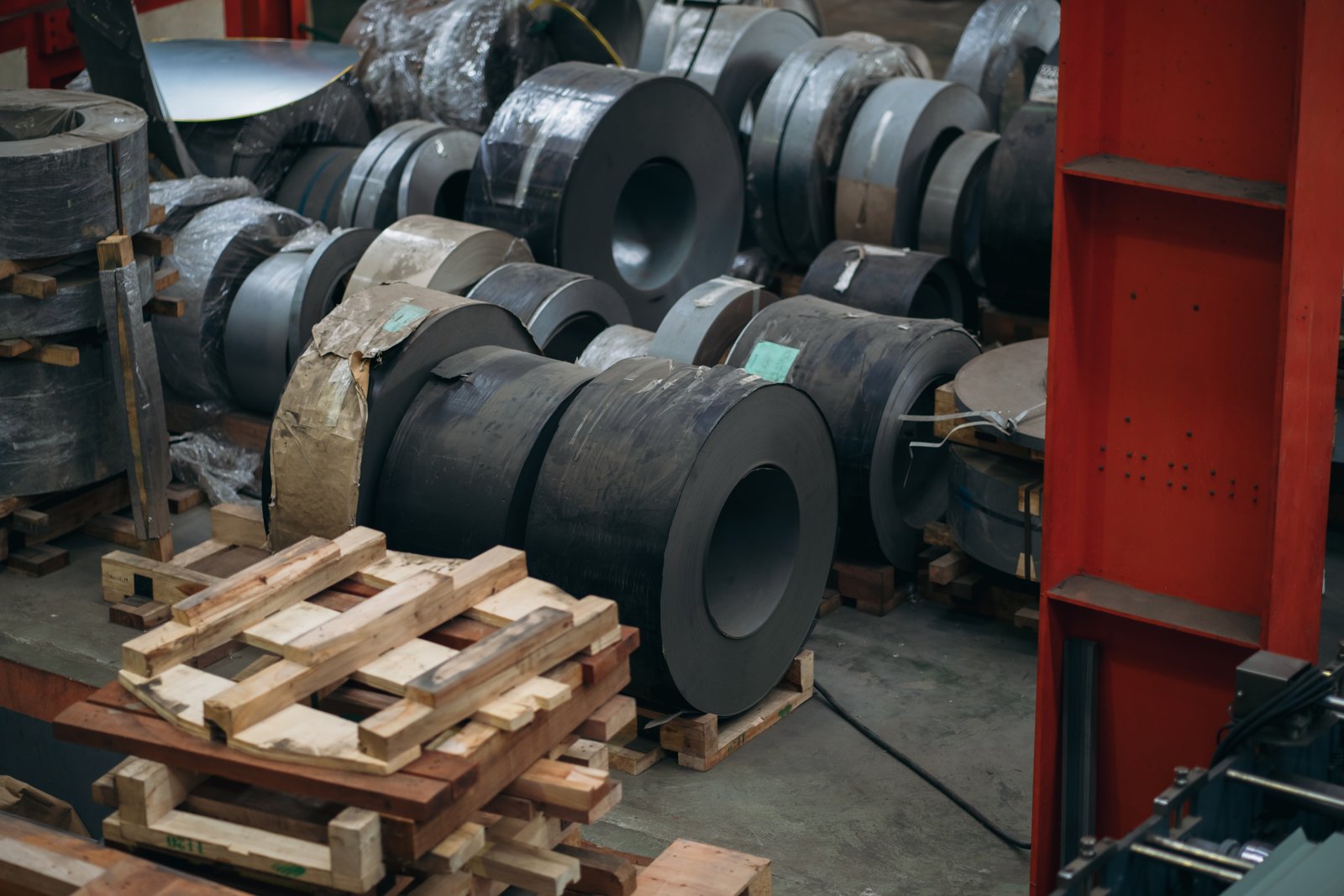
The case for optimizing stainless steel recycling7 is built on a dual foundation of compelling economic advantages and undeniable environmental imperatives. For modern businesses, this is not an "either/or" proposition; it is a "both/and" opportunity. Improving recycling practices allows companies to do well by doing good, creating a more profitable and resilient business that is also a better corporate citizen.
The Compelling Economic Case
The most immediate economic benefit of a well-managed recycling program is the transformation of a waste stream into a revenue stream. Stainless steel scrap is not trash; it is a valuable commodity traded on a global market. For a manufacturing company, the offcuts, trimmings, and rejected parts that are generated daily represent a consistent and predictable source of income. By implementing proper sorting and segregation, they can maximize the value of this commodity, selling it as a certified, high-grade raw material rather than as low-value mixed scrap.
Beyond direct revenue, there are significant indirect savings. First, effective recycling programs dramatically reduce or eliminate costs associated with landfill disposal. Second, for companies that are also consumers of steel, sourcing high-quality recycled material can be a strategic move to de-risk their procurement. The price of recycled stainless steel, while volatile, is often more stable and less expensive than primary material, which is directly tied to the highly speculative prices of virgin nickel and chromium on the LME. According to the Bureau of International Recycling (BIR), the global recycling industry is a multi-hundred-billion-dollar enterprise, employing millions of people worldwide. Tapping into this circular flow is not just an operational tactic; it's a sound financial strategy.
I have personally worked with engineering contractors who have used the revenue from their project scrap to fund new equipment purchases or employee bonuses. It’s a tangible, impactful return that resonates across the entire organization, from the yard manager to the CFO. This direct financial link is often the catalyst that turns a company's recycling efforts from a mandated chore into an enthusiastic pursuit.
Quantifying the Environmental Imperative
The environmental benefits of recycling stainless steel are staggering, and they can be quantified with hard data. The single greatest advantage lies in energy savings. Producing new stainless steel from raw materials is an energy-intensive process involving mining, transportation, and refining at extremely high temperatures. In contrast, melting scrap in an Electric Arc Furnace (EAF) bypasses this entire primary production chain.
The data is clear and compelling. Recycling one tonne of stainless steel saves approximately 70-75% of the energy required to produce it from virgin sources. This massive energy reduction directly translates into a lower carbon footprint. For every tonne of recycled stainless steel used instead of primary material, we avoid approximately 4 to 5 tonnes of CO2 emissions. Furthermore, recycling conserves precious natural resources. Every tonne of scrap recycled saves over 1.5 tonnes of iron ore, 0.5 tonnes of coke, and significant quantities of limestone, nickel, and chromium ore from being mined, preserving natural landscapes and reducing the environmental impact of extraction. It's a win-win-win for energy, emissions, and conservation.
| Environmental Impact | Per Tonne of Primary Production | Per Tonne of Recycled Production | Approximate Savings |
|---|---|---|---|
| Energy | ~50 Gigajoules (GJ) | ~14 Gigajoules (GJ) | 36 GJ (~72%) |
| CO₂ Emissions | ~6,100 kg | ~1,500 kg | 4,600 kg (~75%) |
| Iron Ore | ~1,500 kg | 0 kg | 1,500 kg (100%) |
| Water | ~40,000 Litres | ~18,000 Litres | 22,000 Litres (55%) |
Building Brand Equity and Future-Proofing Business
In today's transparent world, a company's environmental and social practices are under constant scrutiny from customers, investors, and employees. A demonstrable commitment to the circular economy is no longer a "nice-to-have"; it's a critical component of brand equity and corporate reputation. Companies that can proudly and accurately report on their high recycling rates and the recycled content of their products gain a powerful competitive advantage. They become the preferred supplier for an ever-growing cohort of B2B and B2C customers who make purchasing decisions based on sustainability criteria.
Beyond brand image, embracing a circular model is a vital strategy for future-proofing your business. Over-reliance on virgin raw materials exposes a company to significant geopolitical and supply chain risks. Key alloying elements like nickel are concentrated in only a few countries, making their supply chains vulnerable to trade disputes, political instability, and logistical disruptions. By building a business model that increasingly relies on a circular flow of domestically or regionally sourced recycled materials, a company insulates itself from this volatility. This is not just environmentalism; it is astute, long-term risk management.
This forward-looking vision is the driving force behind MFY's mission. We believe the future of the steel industry is circular. By helping our clients across the globe build these efficient, transparent, and resilient supply chains, we are not just selling them stainless steel sheets, coils, and pipes. We are empowering them to become more competitive, more profitable, and more responsible corporate citizens in a world that demands nothing less.
Recycling creates revenue streamsTrue
Proper recycling programs can transform waste into valuable commodities that generate direct income.
Virgin steel is cheaper than recycledFalse
Recycled stainless steel often costs less than virgin material due to lower energy requirements and avoided mining costs.
Conclusion
Ultimately, recycling stainless steel sheet scrap is no longer a niche activity but a strategic imperative. It unlocks significant economic value from waste streams, delivers profound environmental benefits by saving energy and resources, and builds the resilient, future-proof supply chains that are essential for competitive advantage.
-
Learn about sustainable advantages of adopting a circular economy in stainless steel recycling. ↩
-
Understand how coils and sheets drive sustainable practices and efficiencies in manufacturing sectors. ↩
-
Explore the importance of stainless steel pipes in modern sustainable construction practices. ↩
-
Discover how XRF tools revolutionize alloy sorting and recycling ↩
-
Discover the financial losses associated with mixed-grade stainless steel recycling ↩
-
Understand how European regulations drive the automotive industry towards higher recycling rates ↩
-
Understand the environmental benefits of recycling stainless steel, including energy savings and emission reductions. ↩
Have Questions or Need More Information?
Get in touch with us for personalized assistance and expert advice.

